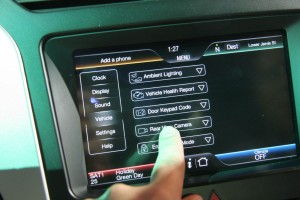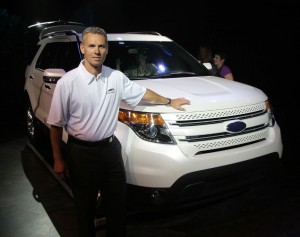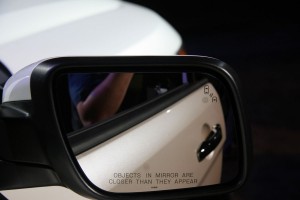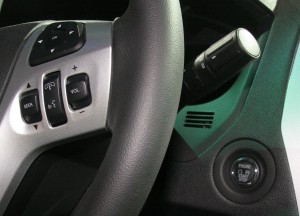We might not yet have the hover cars promised to us by science fiction movies of the past, or even cars that drive themselves – but the 2011 Ford Explorer is loaded to the teeth with tech.
When I was first invited to attend a car launch event, my first reaction was to decline. But upon looking at all the intelligent systems loaded into this SUV, I realized it was just another form factor of computer like a smartphone or a tablet. It even comes equipped with an 8” touch screen computer to control car maintenance and on-board information and entertainment systems.

Not too mention the two other LCD screens in the “centre stack” (a new piece of car terminology I picked up, it means the stuff between the driver seat and passenger seat). There’s also a set of remote control-style buttons embedded on the steering wheel, and I almost expected to see a full QWERTY keypad.
Even the starter key has technology loaded onto it. Ford’s MyKey can be programmed by an administrator to set certain limitations on the Explorer. It limits the maximum speed, the top volume the stereo can be played at, and ensures everyone’s buckled up before the engine starts.

It’s peace of mind for parents who’s children have just hit driving age, says Rick Gemin, SUV marketing plans manager with Ford Canada.
“We have parental controls on TV, and on the Internet, but then we have a 16-year-old driving a 4900 lbs vehicle and tell them to go have fun,” he says. “Probably not the best decision we make as parents.”

Ford has a similar technology they offer for businesses managing a fleet of vehicles. The Ford Works Solution can track where the vehicle is driven using GPS and will issue warnings if it runs into trouble.
Mostly the technology is focused on keeping the driver and passengers safe. A blind spot indicator icon on the side mirrors will light up if a vehicle is detected there. Sensors in the side panels also let you know if cars are approaching as you back out of a parking spot.

“It actually detects coming in either direction and will give an audible tone inside the vehicle to warn you,” Gemin says.
A similar radar sensor at the front of the vehicle allows for adaptive cruise control. When the car in front of you slows down, you slow down. When it speeds up again, you’ll automatically resume normal speed. You can adjust your comfort level for following distance with three intervals.
The same front sensor helps warn the driver if they are in danger of a front-end collision. A series of red lights project up onto the windshield and warn the driver to brake. Meanwhile, the brakes have been primed for maximum effectiveness. The Curve Control feature senses when the car is going too fast around a curve and applies four-wheel braking to slowdown by as much as 10 mph in one second. The safety features list goes on.
Other technology features are for fun and information services. Ford’s SYNC lets you pair your Bluetooth mobile devices with the SUV and control them using voice commands, or using the touch screen. There’s also internet connectivity, through a nearby Wi-Fi network or a USB 3G Internet stick.
Despite all the intelligent features, Gemin says we’re not close to a fully car yet, meaning you’ll still have to be awake during your morning commute.
“I don’t know that we’ll even recommend people take their hands off the steering wheel,” he says. “The driver still needs to be alert about everything around them, even when they’re using these technologies.”
So while these futuristic systems may help the driver, the driver is still not turning responsibility over to the vehicle. Yet.





